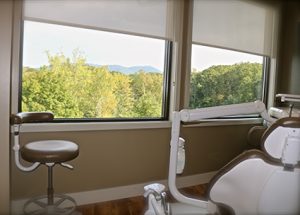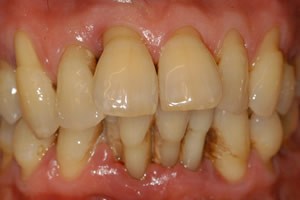Header logo
header top contact widget
Blog Archives
Recent Posts
Categories
Archives
- September 2024
- August 2024
- July 2024
- June 2024
- May 2024
- April 2024
- March 2024
- February 2024
- January 2024
- December 2023
- November 2023
- October 2023
- September 2023
- August 2023
- July 2023
- June 2023
- May 2023
- April 2023
- March 2023
- February 2023
- January 2023
- December 2022
- November 2022
- October 2022
- September 2022
- August 2022
- July 2022
- June 2022
- May 2022
- April 2022
- March 2022
- February 2022
- January 2022
- December 2021
- November 2021
- October 2021
- September 2021
- August 2021
- July 2021
- June 2021
- May 2021
- April 2021
- March 2021
- February 2021
- January 2021
- December 2020
- November 2020
- October 2020
- September 2020
- August 2020
- July 2020
- June 2020
- May 2020
- April 2020
- March 2020
- February 2020
- January 2020
- December 2019
- November 2019
- October 2019
- September 2019
- August 2019
- July 2019
- June 2019
- May 2019
- April 2019
- March 2019
- February 2019
- January 2019
- December 2018
- November 2018
- October 2018
- September 2018
- August 2018
- July 2018
- June 2018
- May 2018
- April 2018
- March 2018
- February 2018
- January 2018
- December 2017
- November 2017
- October 2017
- September 2017
- August 2017
- July 2017
- June 2017
- May 2017
- April 2017
- March 2017
- February 2017
- January 2017
- December 2016
- November 2016
- October 2016
- September 2016
- August 2016
- July 2016
- June 2016
- May 2016
- April 2016
- March 2016
- February 2016
- January 2016
- December 2015
- November 2015
- October 2015
- September 2015
- August 2015
- July 2015
- June 2015
- May 2015
- April 2015
- March 2015
- February 2015
- January 2015
- December 2014
- November 2014
- October 2014
- September 2014
- August 2014
- July 2014
- June 2014
- May 2014
- April 2014
- March 2014
- February 2014
- January 2014
- December 2013
- November 2013
- October 2013
- September 2013
- August 2013
- July 2013
- June 2013
- May 2013
- April 2013
- March 2013
- February 2013
- January 2013
- December 2012
- November 2012
- October 2012
- September 2012
- August 2012
- July 2012
- June 2012
Missing Teeth Should Be Replaced For The GOOD Of Overall Well-Being.
Posted on Oct 22, 2019 by William J. Claiborne, DDS MS
Sometimes, it’s what we can’t see that can do the most harm.
A surprising example of that is wearing dentures. While dentures and partial dentures do replace the presence of teeth, they actually have a detrimental effect on what lies beneath.
If you remove your denture, you can actually SEE what’s going on.
For people who have worn dentures or partials for ten years or more, the appliance has applied pressure to the bone ‘ridge’ that once supported natural teeth. And, without the stimulation of tooth roots in the bone, the jaw begins to decline in mass.
Without the denture in place to “fluff up” the shape of the mouth, a look in the mirror can reveal signs of bone loss. These include:
- Deep wrinkles around your mouth.
- The corners of your mouth turn downward, even in a smile.
- The mouth seems sunken in. Jowls have formed on the sides of the face.
- The chin seems more pointed than in your youth.
- The chin may also seem closer to the nose.
This decline in bone occurs when a tooth root is removed from the jaw bone. Without natural tooth roots to nourish and stimulate the root, the process of ‘resorption’ begins.
Additionally, resorption increases risks for tooth loss to neighboring natural teeth. As the jaw bone declines in an area to adjacent tooth roots, these teeth are more vulnerable to cavities, gum disease, and fractures.
It is a fact that when a tooth is lost, the one next to the one missing is most likely the next to be lost.
For people who opt to replace a tooth (or teeth) with a crown-&-bridge, they can also expect bone loss. Over time, this is visible by a gap that seen between the base of the bridge and the natural gum tissues.
As a periodontist, the most common complaint I hear from those who wear dentures or partials is having discomfort while eating. Many long-time denture and partial wearers experience sore spots on tender gum tissues. This occurs because their appliances move when chewing certain foods.
This movement is the result of the declined bone mass that supports the denture. This gum-covered ‘ridge’ where teeth were once held flattens as the jaw bone declines in height and mass. Because a denture or partial is made to contour to this ridge, it begins to slip as the bone shrinks. This is when people tend to use denture adhesives and pastes more frequently.
To avoid discomfort when eating, denture wearers begin to alter their food selections, opting for soft foods that dissolve quickly in the mouth without having to chew. In many cases, these choices lack the fiber, vitamins, minerals and protein needed for proper nutrition.
To no surprise, denture wearers are known to take more medications and have more gastrointestinal problems than non-denture wearers. Yet, the problems of “slippery” or “wobbly” dentures can affect social involvement as well.
Due to fear of embarrassing slips, denture wearers begin to decline social gatherings where food is the centerpiece. Social involvement is a healthy part of keeping our brains and bodies active, which is a positive part of aging.
It stands to reason that there is a need to replace more than the mere presence of teeth. This is why so many dentists and dental specialists now recommend dental implants. For decades now, they have been a dependable option to replace missing natural teeth.
There are many advantages to dental implants. From a health standpoint, I see their ability to halt bone loss as a leading benefit. Dental implants are placed in the jaw bone, recreating the stimulation of tooth roots. This helps to preserve the strength of the jaw bone while restoring biting strength and chewing stability.
I also like that dental implants are self-supporting since they use the jaw bone for support. They do not rely on having otherwise-healthy, natural teeth crowned for the mere purpose of supporting replacement teeth (as in crown-&-bridge combinations).
From a value perspective, dental implants are an excellent investment. With proper selection, placement and care, they are designed to last your lifetime. And, it’s an investment you’ll enjoy every day as you comfortably eat foods you love, smile and laugh without worry, and wake up with a smile!
There is much to know as to why keeping your natural teeth is so important. However, when tooth loss does occur, you can protect your health and well-being by replacing them with implants. With dental implants, you are able to avoid the long-term repercussions of bone loss.
When extreme bone loss has occurred, we can restore bone mass through several methods. One uses a bone-rebuilding material that generates new growth. For some patients who have lost bone due to gum disease, our Asheville periodontal dental office also offers LANAP technology (Laser-Assisted New Attachment Procedure). This advanced technology has been found to stimulate bone regrowth in damaged areas.
Ask about dental implants to restore a natural look and feel while you protect surrounding teeth and bone structure. As a periodontist with advanced training in the diagnosis and placement of all types of implant systems, I can recommend options that will work best for your individual situation.
Call 828-274-9440 to learn more or ask for a consultation to personally discuss your needs and preferences.
Afraid of the Dentist? Here’s How To Get Your Smile Back!
Posted on Oct 11, 2019 by William J. Claiborne, DDS MS
Have you ever suddenly seen a snake out of the corner of your eye?
Immediately, the brain kicks in a “fight or flight” response that causes us to react. Because we don’t know whether or not the snake is poisonous, the typical reaction is to quickly move away from danger.
Past trauma can also trigger reactions. Past experiences can sometimes cause people to react in ways they can’t control. For adults who have experienced a frightening or painful dental procedure, the fear it caused can become embedded (sometimes forever) in the subconscious.
Some things that cause us to flinch or freeze can occur from reasons we can’t even explain. Patients who are nervous or afraid when they first arrive often know what past episode triggered it. Some are unable to recall an unpleasant dental visit yet react to certain sights, smells or sounds.
Dental fear occurs in different people at different levels. It can activate reactions of more rapid heartbeat, sweating, heavier breathing, and muscle tension.
Here, at our Asheville periodontal office, most patients are relaxed from the moment they walk in and throughout treatment. Some are fine until they are seated in the treatment chair while others are nervous and uneasy the entire time.
Dental fear and anxiety are often the result of an unfortunate experience in a dentist’s office that made the person feel out of control and trapped. This tends to carry over so that perceived pain can be just as real as actual pain.
Experiencing uneasy feelings at dental visits is not uncommon. According to the Cleveland Clinic, between 9 – 15 percent of Americans say they avoid going to the dentist because of anxiety or fear. (https://my.clevelandclinic.org/health/diseases/11176-dental-phobia-in-adults)
They also cite the most common causes as:
- Fear of pain
- Fear of injection or that the injection won’t work
- Fear of anesthetic side effects
- Feelings of helplessness and loss of control
- Embarrassment and feeling encroachment of personal space
Periodontal (gum) disease is the result of an accumulation of oral bacteria. It is also the leading cause of adult tooth loss. As a Periodontist, I find that most individuals have developed gum disease because they were too afraid of having regular dental care. Many avoid going to the dentist for years, only ‘giving in’ when something becomes so painful they can no longer delay treatment.
At Biltmore Periodontics, patient comfort is a priority at every visit. And, it is obvious from the moment you walk in our door. Our reception area is designed to pamper patients from the moment they enter. Patients are treated to a selection of gourmet coffees, cable television and WiFi connection. Seating is comfortable and our front office staff is attentive to the needs of each guest.
New patients begin in a private consultation room so we can discuss treatment needs and concerns in a living room style setting. During this time, I’ll answer your questions and explain treatment options, including sedation.
We offer oral sedation as well as I.V. sedation (twilight sleep) for most procedures, if desired. Oral sedation is a pill that helps patients relax. It also has an amnesiac effect, leaving most with little or no memory of treatment afterward.
 I.V. sedation places the patient in a deeper sedative state, also erasing memory of the procedure. It is administered by a doctor of anesthesiology for optimal comfort and safety. With both, patients are monitored with advanced safety equipment throughout treatment.
I.V. sedation places the patient in a deeper sedative state, also erasing memory of the procedure. It is administered by a doctor of anesthesiology for optimal comfort and safety. With both, patients are monitored with advanced safety equipment throughout treatment.
Our surgical suite offers a large window with beautiful mountain views. This is very soothing and relaxing for patients as they are attended to by gentle, compassionate hands.
Our entire staff provide a unified team, each bringing a sincere level of compassion and commitment to excellent care. While the doctors involved in your care are top-notch, I am always happy to hear so many patients tell me how our staff helps them to feel at ease and pampered.
It doesn’t take long for patients to realize our goal is to provide skilled care delivered with comfort. The more they experience this, the more relaxed they become and develop a sense of trust.
When patients trust us, many no longer need to feel anxious and “white-knuckled” in a dental chair. And, they see their dental care as a positive part of their overall health, which makes them more involved with their oral health – and smiling confidently!
Like everyone, fearful patients desire a healthy, confident smile. Once the obstacle of fear is removed, their ability to achieve that is greatly heightened.
If you or someone you know has fear that has prevented needed or desired dental care, schedule a consultation appointment. Call 828-274-9440 to learn more.
Rheumatoid Arthritis (RA) Linked To Periodontal Disease
Posted on Oct 02, 2019 by William J. Claiborne, DDS MS
 As a periodontist, I specialize in the treatment of all stages of periodontal (gum) disease. Although this particular dental specialty is not as visible as a general dentist, we are very-involved members of the medical and dental community. According to the Centers for Disease Control & Prevention (CDC), over 47 percent of American adults have some level of gum disease.
As a periodontist, I specialize in the treatment of all stages of periodontal (gum) disease. Although this particular dental specialty is not as visible as a general dentist, we are very-involved members of the medical and dental community. According to the Centers for Disease Control & Prevention (CDC), over 47 percent of American adults have some level of gum disease.
Like the formation of cancer, many individuals are unaware when periodontal disease becomes active. When early symptoms appear (such as bleeding gums when brushing, bad breath and gum tenderness), many people shrug them off as temporary.
However, gum disease only progresses once underway. Eventually, gums become red in color and pus pockets form at the base of teeth. In advanced stages, teeth loosen and may require removal. Gum disease, to no surprise, is the nation’s leading cause of adult tooth loss.
The potent bacteria of periodontal disease can enter the bloodstream through tears in weakened gum tissues. This allows it to travel throughout the body. Research has shown it is able to trigger a number of serious health problems, including heart disease, stroke, diabetes, memory loss, and impotency.
Rheumatoid arthritis (RA), a condition seemingly unrelated to gum disease, is a debilitating disease that destroys joints. It is disabling and painful. In most cases, RA emerges gradually, often beginning with morning stiffness along with weak and aching muscles. Joint pain follows, with joints feeling sore and stiff. RA is typically found in the fingers, wrists, elbows, hips, knees, ankles, toes, shoulder and neck.
As inflammation from RA increases, joints become swollen with symptoms including fever, disfiguring of hands and feet, numbness and tingling. There is no cure for RA and lifelong treatment is required. Treatment may consist of medications, physical therapy, or even surgery.
Yet, like RA, gum disease causes pain, swelling, and tenderness. As it worsens, the associated inflammation can lead to destruction of the bone that supports teeth along with surrounding tissues. And, the similarities go much deeper.
Both gum disease and RA share a genetic likeness in clinical makeup and structures. This has been particularly apparent in pathogens, which are agents in the body that lead to disease or illness. The pathological processes that occurs in both gum disease and RA are almost identical.
Too, the particular species of bacteria found in gum-diseased oral tissues and tissues that surround joints in those who suffer with RA. Equally concerning is, while both conditions clearly cause chronic inflammation in tissues connected to bone, researchers have found the two diseases share a similar inflammatory trigger.
In one study, a particular pathogen associated with periodontal disease was found to activate the same destructive process of rheumatoid arthritis. It has also been shown that, by treating periodontal disease in RA patients, RA symptoms often improve ( likely due to the system’s reduced burden of oral inflammation).
These findings reveal just how closely our oral health correlates

A relaxing and comfy environment.
to our overall health. This information should send up alarms that the presence of gum disease can greatly increase your risk for serious health conditions. Clearly, people who have RA should be particularly diligent when it comes to their oral health.
If you are experiencing symptoms of gum disease (as mentioned above), seek treatment at your earliest convenience. You can begin with a consultation appointment in our comfortable Asheville periodontal office. A referral is not needed.
Call 828-274-9440 to learn more.


